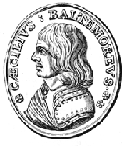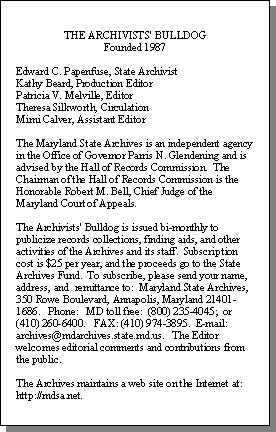|
NEW FINDING AIDS
by Robert Barnes
Several new databases have been added to the growing
array of web pages to assist researchers at the
Archives.
Some of the databases were donated by a patron who wishes
to remain anonymous and consist of
indexes
to heads of families in the 1870 census for Calvert,
Caroline, Cecil, Kent, Queen Anne's, Somerset, and Talbot
counties. A typical entry gives the name of the head of
the family, age, sex, race, birthplace, microfilm number
and page reference, and MSA series number.
The other databases, done by staff and interns, consist
of those portions of the
Baltimore City Directories
for 1871 and 1881 that list African American residents.
These records are particularly useful for helping locate
Baltimore City African Americans in the 1870 and 1880
censuses since the directories were compiled at the same
time the censuses were taken, but published the following
the years. Each entry gives the name of the person,
address, occupation, MSA series number, and microfilm
number.
All of these finding aids make the researcher's task much
easier. The compilers, whether patrons or staff, are to be
commended.
|
|





